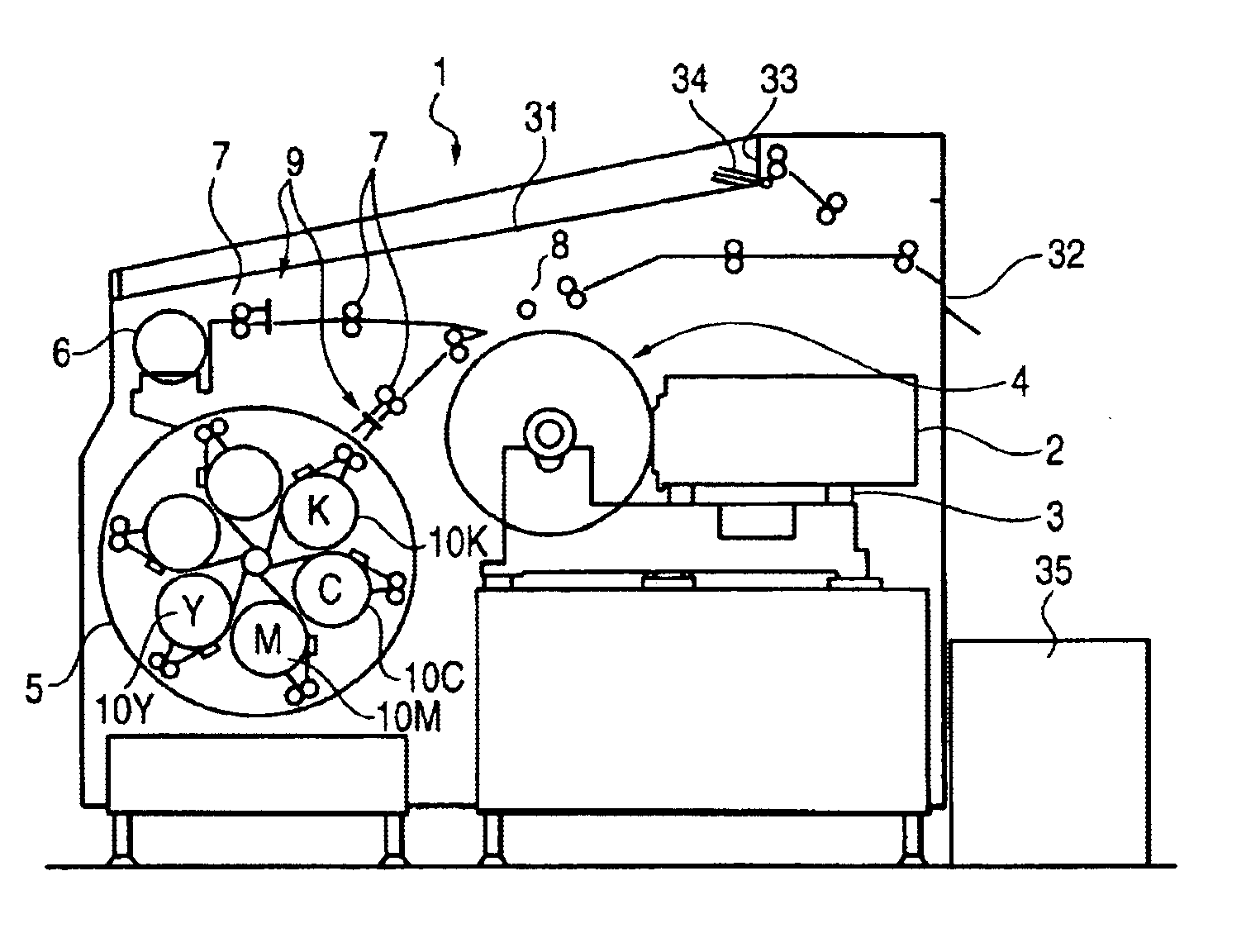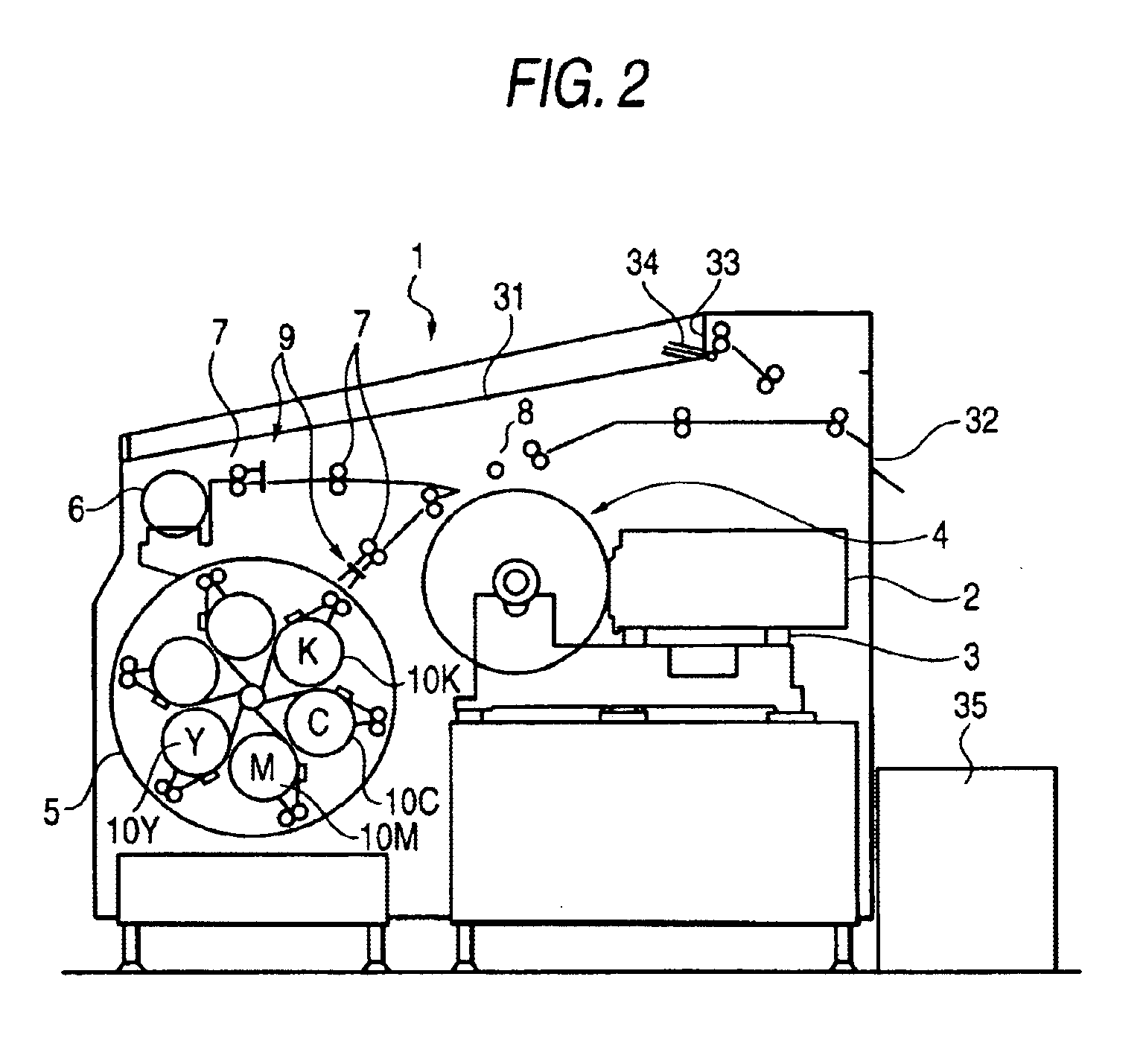Laser thermal transfer recording method and apparatus therefor
a technology of thermal transfer and recording method, applied in thermography, duplicating/marking methods, instruments, etc., can solve the problems of inability to achieve satisfactorily high resolution, inability to ensure sharp outline of laser fusion system (3), lack of sharp dots in recording dots, etc., to achieve excellent print-matching performance, high stability, and high definition
- Summary
- Abstract
- Description
- Claims
- Application Information
AI Technical Summary
Benefits of technology
Problems solved by technology
Method used
Image
Examples
example 1-1
Preparation of Thermal Transfer Sheet K (Black)
[Formation of Backing Layer]
(Preparation of Coating Composition for First Backing Layer)
Aqueous dispersion of acrylic resin 2 parts(Jurimer ET410, 20 wt %, produced by Nippon Junyaku Co.,Ltd.)Antistatic agent7.0 parts(aqueous dispersion of tin oxide-antimony oxidemixture, average grain size: 0.1 μm, 17 wt %)Polyoxyethylene phenyl ether0.1 partsMelamine compound0.3 parts(Sumitex Resin M-3, produced by Sumitomo Chemical Co.,Ltd.)Distilled water to make 100 parts
(Formation of First Backing Layer)
One surface (back surface) of a 75 μm-thick biaxially stretched polyethylene terephthalate film (Ra of both surfaces: 0.01 μm) as a substrate was subjected to corona treatment, coated with the coating composition for a fist backing layer so as to have a dry thickness of 0.03 μm, and then dried for 30 seconds at 180° C. Thus, the first backing layer was formed. The substrate used herein had Young's modulus of 450 kg / mm2 (approximately 4.4 GPa) in ...
example 1-2
Transfer images were formed in the same manner as in Example 1-1, except that an image-receiving sheet using a 100 μm-thick white PET support (Lumiler #100E20, produced by Toray Industries, Inc.) was used in place of the image-receiving sheet used in Example 1-1.
example 2-1
Preparation of Thermal Transfer Sheet K (Black)
[Formation of Backing Layer]
(Preparation of Coating Composition for First Backing Layer)
Aqueous dispersion of acrylic resin 2 parts(Jurimer ET410, 20 wt % on solid basis, produced by NipponJunyaku Co., Ltd.)Antistatic agent7.0 parts(aqueous dispersion of tin oxide-antimony oxide mixture,average grain size: 0.1 μm, 17 wt %)Polyoxyethylene phenyl ether0.1 partsMelamine compound0.3 parts(Sumitics Resin M-3, produced by Sumitomo Chemical Co.,Ltd.)Distilled water to make 100 parts
(Formation of First Blacking Layer)
One surface (back surface) of a 75 μm-thick biaxially stretched polyethylene terephthalate film (Ra of both surfaces: 0.01 μm) as a substrate was subjected to corona treatment, coated with the coating composition for a fist backing layer so as to have a dry thickness of 0.03 μm, and then dried for 30 seconds at 180° C. Thus, the first backing layer was formed. The substrate used herein had Young's modulus of 450 kg / mm2 (approxima...
PUM
| Property | Measurement | Unit |
|---|---|---|
| thickness | aaaaa | aaaaa |
| pressure | aaaaa | aaaaa |
| surface roughness | aaaaa | aaaaa |
Abstract
Description
Claims
Application Information
 Login to View More
Login to View More - R&D
- Intellectual Property
- Life Sciences
- Materials
- Tech Scout
- Unparalleled Data Quality
- Higher Quality Content
- 60% Fewer Hallucinations
Browse by: Latest US Patents, China's latest patents, Technical Efficacy Thesaurus, Application Domain, Technology Topic, Popular Technical Reports.
© 2025 PatSnap. All rights reserved.Legal|Privacy policy|Modern Slavery Act Transparency Statement|Sitemap|About US| Contact US: help@patsnap.com



